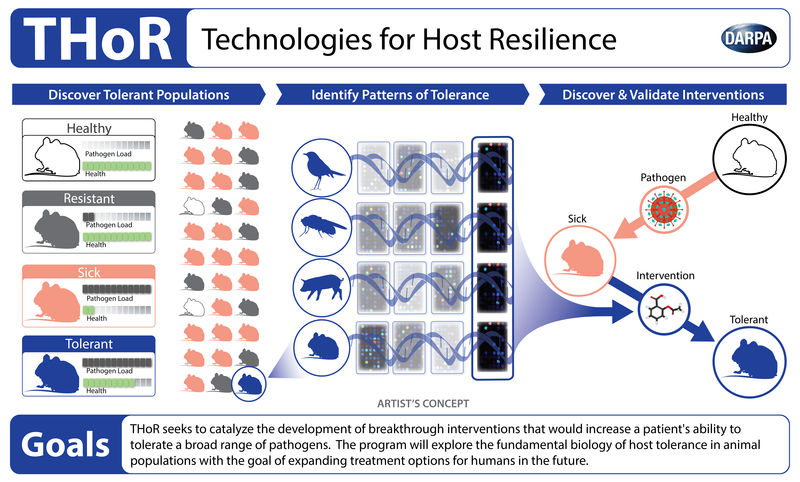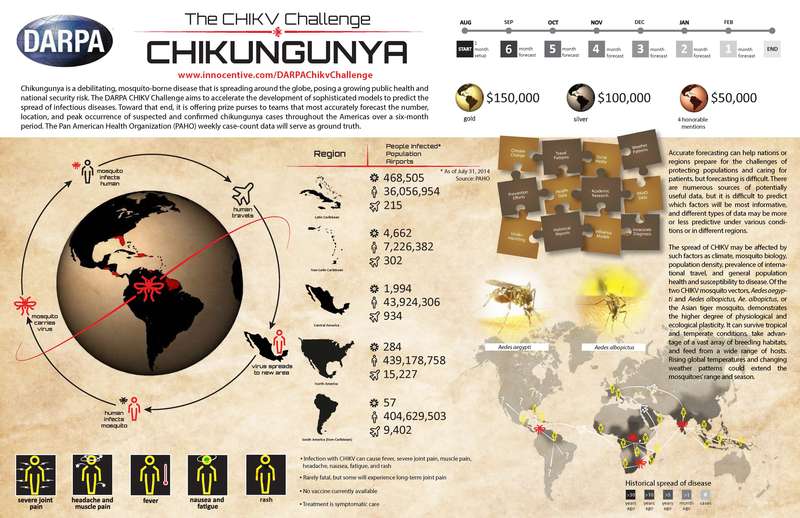How DARPA Plans to Efficiently Battle Epidemics
 The Defense Advanced Research Projects Agency (DARPA) is a government agency focused on making investments in solutions that can protect the U.S. from matters relevant to national security. The agency hosts a number of competitions where individuals from the public and private sectors can submit their proposals for tackling these important issues.
The Defense Advanced Research Projects Agency (DARPA) is a government agency focused on making investments in solutions that can protect the U.S. from matters relevant to national security. The agency hosts a number of competitions where individuals from the public and private sectors can submit their proposals for tackling these important issues.
A sub-division of DARPA, the Biological Technologies Office (BTO), is working on using engineering and information science to “drive and reshape biotechnology for technological advantage.”
Bioscience Technology (BST) interviewed Colonel Matt Hepburn, a program manager at the BTO where he focuses on infectious disease forecasting.
COL. Hepburn told BST his office’s goal is to make, “targeted investments in partners who can come up with innovative solutions for handling major viral infections.”
He discussed two unique programs he is working on that could change the way the world responds to the next major viral outbreak.
Discovering the Secrets of Immunity
COL. Hepburn, an active duty army physician and former Director of Medical Preparedness for the White House’s National Security staff, believes there needs to be a fundamental shift in thinking regarding our understanding of viruses beginning with following a treatment strategy based on the host’s unique capabilities.
“One research area we’re interested in is analyzing the host-pathogen relationship to figure out the secrets of the body’s response to infection,” COL. Hepburn said.
This hypothesis is being explored through a program called Technologies for Host Resilience (THoR), which entails a research process aimed at creating a strategy for mitigating the harmful  effects of infectious diseases.
effects of infectious diseases.
A key factor of this initiative is that scientists are looking for ways to boost immunity levels to a diverse range of pathogens for people, instead of seeking out a method for killing the virus.
Researchers use animal populations to examine tolerance levels to different infections. The next phase involves honing in on the biology behind these tolerance tactics and identifying the way they are implemented when the subject is infected.
COL. Hepburn added that the hope is that, “Understanding the fundamental mechanisms of tolerance and transmission could enable a way to reduce mortality from potent threats like antimicrobial-resistant bacteria.”
Future of Forecasting
Developing potent predictions for possible outbreaks is another endeavor COL. Hepburn is interested.
The Ebola outbreak in West Africa raised a lot of questions regarding health organizations and pharmaceutical company’s preparedness for dealing with outbreaks.
Multiple factors played a role in the quick rise of the Ebola epidemic. Some examples include reports of the country’s hospitals being unable to handle the influx of infected patients and lax quarantine procedures, which allowed patients to walk freely among the populace.
Also, it took many months for even a workable vaccine candidate to be created for the virus.
 COL. Hepburn told BST data could play an important role in charting how a virus can evolve and honing in on where it could spread. He elaborated on a recent challenge his office launched regarding the Chikunguya virus. This illness is spread by mosquitoes and can cause symptoms like high fever, and joint and muscle pain.
COL. Hepburn told BST data could play an important role in charting how a virus can evolve and honing in on where it could spread. He elaborated on a recent challenge his office launched regarding the Chikunguya virus. This illness is spread by mosquitoes and can cause symptoms like high fever, and joint and muscle pain.
Fatal cases of the disease are rare, but the symptoms can morph into debilitating joint pain. No cure has been found.
Last summer, the agency announced entries were open for the CHIKV challenge, a competition where teams were tasked with using data sets that would accurately predict the global progression of the virus.
“Forecasts would be extremely helpful to public health officials in containing infectious diseases, but it is really difficult,” COL. Hepburn said in an official announcement. “The science of forecasting is a work in progress. It’s akin to trying to solve a jigsaw puzzle with some of the pieces missing and a vague sketch of what the finished image should look like.”
A total of thirty-eight teams responded to the challenge from all over the world. Hepburn told BST the challenge lasted six months, from September 2014 to March 2015.
A duo from the University of Arizona, mathematics professor Joceline Lega and assistant epidemiology professor Heidi Brown, won the grand prize of $500,000 in May 2015.
The team were selected as the winners because their model was able to “estimate the number, duration and peak of Chikunguya cases that occurred in 2014 and 2015 in the Caribbean,” writes UA News. Their predictions stayed consistent even though participants were allowed to update their numbers each month.
Next Steps
Results from the THoR program will be announced within the next few months, according to COL. Hepburn. He told BST his team will thoroughly vet and evaluate the applications that would emerge from this particular challenge.
In regards to the CHIKV challenge, COL. Hepburn told BST one of the benefits of the competition was that DARPA could see it was possible to implement a data-oriented approach to assess the threat levels of emerging infections. The University of Arizona professors are planning on testing their model’s efficiency for determining the spread of other epidemics.
“The goal is to be able to contain an emerging epidemic, in part by being able to predict the evolution of a virus in the same way a weatherman can forecast tomorrow’s weather each day,” said COL. Hepburn.
• CONFERENCE AGENDA ANNOUNCED:
The highly-anticipated educational tracks for the 2015 R&D; 100 Awards & Technology Conference feature 28 sessions, plus keynote speakers Dean Kamen and Oak Ridge National Laboratory Director Thom Mason. Learn more.





